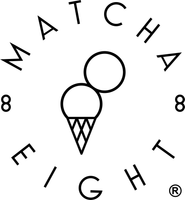Tel : 010-2058732 / 010-2008732
Address :
(The Exchange TRX)
L2.73.0 Plaza The Exchange TRX, Persiaran TRX, 55188 Tun Razak Exchange, Kuala Lumpur.
(LaLaport BBCC)
G-68, Ground Floor, LaLaport Bukit Bintang City Centre, 2, Jalan Hang Tuah, 55100, Kuala Lumpur.
Business Hours
Daily | 10am - 10pm
Contact us
Matcha Ice Cream Around the World: How Different Cultures Enjoy It

Matcha, once sipped by Zen monks in Kyoto temples, has transformed into a modern-day global sensation, especially in the world of desserts. From delicate parfaits in Tokyo to creamy affogato in Rome and local mash-ups in Malaysia, matcha ice cream has found its way into hearts, menus, and Instagram feeds around the world.
But have you ever wondered how different cultures enjoy it in their own special ways? Let’s take a scoop-by-scoop journey around the world and discover what makes matcha ice cream a global icon.
Japan: Tradition in Every Scoop
Japan is the birthplace of matcha,finely ground green tea made from shade-grown leaves and naturally, it’s where matcha ice cream found its first loyal fans. The earliest version of commercial matcha ice cream appeared in Wakayama around 1958, when a tea shop began blending it into soft serve to attract summer customers.
Matcha ice cream in Japan today ranges from creamy and sweet to intensely earthy and bitter, often labeled by intensity levels from 1 to 7. In Kyoto, it’s not uncommon to find “level 7” matcha soft serve, so strong that it tastes almost like straight matcha tea, with an umami aftertaste.
You’ll often find it served with mochi, red bean paste (anko), or kinako powder in elegant dessert sets. It’s not just dessert, it’s a continuation of the tea ceremony itself, modernized with a scoop.
Italy: Matcha Meets Espresso Culture
Italy, the land of gelato, has embraced matcha ice cream with a flair for sophistication. While creamy textures and high-fat content are key to Italian-style gelato, matcha finds a perfect home in the silky base. One trend that has caught on in recent years is the matcha affogato, a creative twist on the classic Italian dessert where hot matcha or matcha espresso is poured over cold matcha gelato, creating a blend of bitter, creamy, and warm notes in every spoonful. Gelaterias in Rome and Milan have also been known to experiment with nutty combinations like pistachio-matcha or even matcha-lavender for a floral and calming taste. Some adventurous chefs are drizzling olive oil on matcha gelato to enhance its silkiness and add a savory touch. These innovations reflect Italy’s passion for elevating texture and aroma and their openness to fusion done right.
Malaysia: Local Boldness and Sweet Creativity
Malaysia’s food scene is famously bold, diverse, and adventurous, and matcha ice cream is no exception. While it’s common to find matcha soft serve or ice cream in malls and cafés, what makes the Malaysian style stand out is the fusion of local elements. Matcha ice cream here is often paired with gula melaka pearls, roasted coconut flakes, or even jackfruit chips, adding layers of sweetness, chewiness, and crunch. Some local dessert shops serve it with kuih tacos, made from colourful glutinous rice flour, or sandwich it between pandan waffles and crispy roti jala. These combinations are not just playful; they reflect the Malaysian palate, which loves mixing textures, sweetness levels, and cultural flavours into one rich, satisfying experience. Interestingly, food trend reports in 2024 placed matcha-based desserts among the top five trending café menu items in Kuala Lumpur, proving that Malaysians are not only embracing the matcha wave, they’re making it their own.
Matcha Popsicles. Photo Source: Fly Me to The Vegan Buffet
United States: Artisanal, Plant-Based and Viral
In the United States, matcha ice cream isn’t just a treat, it’s a lifestyle trend. The American food scene thrives on novelty, wellness, and Instagram-worthiness. That’s why you’ll find matcha used in everything from rolled ice cream at night markets to vegan matcha popsicles made with oat or cashew milk. There’s even a growing interest in “dirty matcha” sundaes, which combine matcha ice cream with espresso drizzle for a bold caffeine hit. Some dessert bars experiment with toppings like pistachio butter, sriracha honey, or crystallised ginger, creating flavour combinations that are both daring and surprisingly balanced. Driven by plant-based trends and Gen Z’s focus on functional ingredients, matcha has positioned itself as the cooler, greener cousin to coffee. In the U.S., it’s not just about how matcha ice cream tastes, it’s also about how it looks, makes you feel, and fits your vibe.
South Korea: Sleek, Modern and Matcha Maximalist
South Korea's minimalist café culture has elevated matcha to a sleek and stylish experience. In trendy neighbourhoods like Hongdae or Garosugil, cafés are serving matcha bingsu, Korean shaved ice topped with finely milled matcha powder, mochi, and condensed milk in artful presentations. But it doesn’t stop there. Some spots have begun layering matcha ice cream with tiramisu cubes, jelly made from kombu (seaweed), or even honeycomb chunks, combining subtle umami with creamy sweetness. Korean dessert trends often lean towards aesthetically clean, lightly sweet, and health-forward which is why matcha, with its antioxidant benefits, fits right in. A growing trend in Seoul is black sesame and matcha soft serve, offering an earthy, nutty profile with a visually striking monochrome swirl that’s become a hit on social media.
At Matcha Eight, We Celebrate All These Flavours, but Keep Kyoto at Heart
At Matcha Eight, our journey began with a passion for pure, premium matcha sourced from Wazuka, Kyoto, a region known for producing some of the world’s finest ceremonial-grade matcha. Guided by the culinary expertise of Chef Takuji Takahashi, a Michelin-starred chef from Kyoto, we honour tradition while embracing local creativity.
Every scoop we serve is a blend of two cultures: the quiet refinement of Kyoto and the bold soul of Malaysia. Whether you’re new to matcha or a long time lover, we invite you to taste that journey from Japan’s temples to your local café in every bite.
This article is contributed by Nursyaza Nadia Azman




